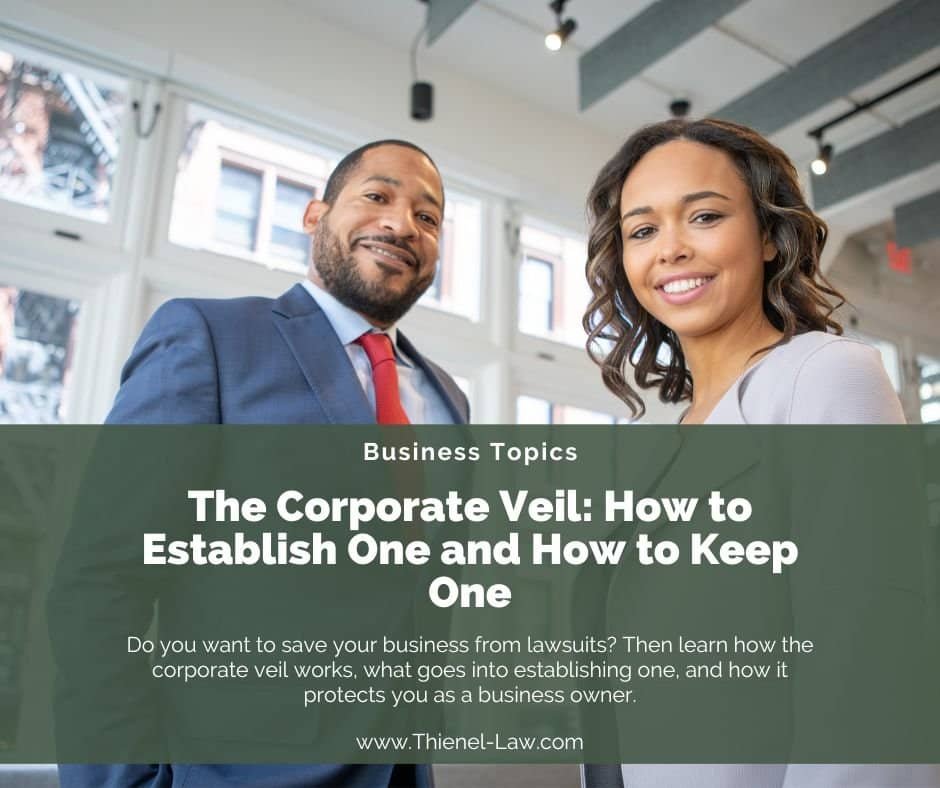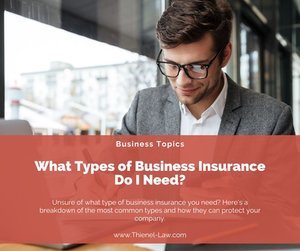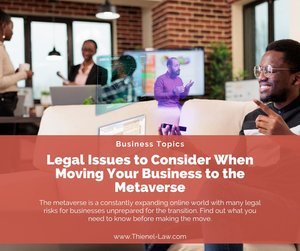The Corporate Veil: How to Establish One and How to Keep One
Business owners need to consider liability protection as a priority when creating a business entity. Creating a separate entity for the business can protect the business owner from personal liability. Our Maryland business attorney discusses the concept of the corporate veil, how to create it, and what happens when a company’s owners fail to maintain the corporate veil. Keep reading to learn more about why you may need to seek legal advice now instead of when your company is sued by a creditor, employee, or another party.
What Is a Corporate Veil?
The corporate veil is the legal term used to describe the separation between the assets of a legal entity and the personal assets of shareholders, directors, and officers. The corporate veil provides liability protection for business owners. It protects their personal property from being used to satisfy judgments or business liabilities.
A primary benefit of operating a business as a separate legal entity is to avoid personal liability. However, some business entities provide more protection than others. Also, mistakes and errors while operating the business could result in creditors and other parties piercing the corporate veil to attack the owner’s personal assets.
How to Set Up a Corporate Veil
If you do not formally create a separate legal entity for your business, you operate as a sole proprietor. Sole proprietorships can be registered with the State of Maryland. However, that does not offer any liability protection for the business owner. The sole proprietor and the business are the same entity. The owner is liable for all company debts and liabilities.
The same is true with a Maryland general partnership. You may do business with one or more people to create a general partnership. However, a general partnership offers no protection from business liability. As a sole proprietor, a general partner is not a separate legal entity from the business.
To establish a corporate veil and liability protection for owners, you must create a separate legal entity for your business. Examples of separate legal entities include:
Limited Liability Partnership (LLP)
Limited Partnership (LP)
Many small businesses choose a limited liability company for their structure instead of a corporation. The corporate structure is more rigid and formal than an LLC. However, it is important to consider the level of liability protection offered by an LLP, corporation, or LLC.
How Some Business Entities Offer More Protections for Owners Than Others
A general partner and sole proprietor have no protection from business liability. Therefore, they are entirely exposed to personal liability. That could include being vicariously liable for damages caused by an employee’s negligence.
However, before choosing a corporate structure for your company, consider the different levels of protection each business entity offers.
Limited Partnerships (LP)
A limited partnership has one general partner who operates the business. The general partner in an LP has unlimited personally liable for company debts and obligations. However, the other partners have limited liability in exchange for limited control. Limited partners cannot participate in the management of the business.
Limited Liability Partnerships (LLP)
All partners in a limited liability partnership have limited personal liability. They are liable for company debts, their actions, and the actions of those they directly supervise. However, they are not liable or responsible for the actions of other partners.
Professionals often favor LLPs because they need not worry about being personally responsible for malpractice lawsuits against another partner.
Limited Liability Company (LLC)
Limited liability companies combine many of the positive features of the structures for corporations and partnerships. It is less costly and easier to create and maintain an LLC than a corporation. In addition, LLCs are generally more flexible as they are created and governed by state law.
The members (owners) rarely are held personally liable when the company is sued or goes bankrupt. If the LLC cannot pay its creditors, the creditors cannot sue the members or try to seize their personal bank accounts and assets.
However, members could be personally liable in some situations. For example, LLC members are liable for any debts they personally guarantee. They could also be liable for unpaid payroll taxes, fraud cases, and if they are sued for their personal wrongdoing. Therefore, LLC members do not have complete protection from personal liability.
Corporations
Corporations provide the highest level of protection from personal liability. The company is a legal entity separate and apart from the shareholders (owners). Therefore, shareholders are not held liable for any corporate debts or liabilities.
Owners could be held liable for corporate debts if they personally guarantee a loan for the business. Also, you must be careful not to sign a contract in your personal name. The authorized corporate representative should sign all corporate documents in their capacity as a corporate employee.
How Does a Corporate Veil Fail?
Even when business owners establish a corporate veil, there are instances in which the court may “pierce the veil” and set aside the liability protection established by creating a legal entity.
When the corporate veil is pierced, the business owners, directors, officers, members, and shareholders could have personal liability for a debt. Often, piercing the corporate veil is a challenging legal battle.
However, it could be worth the trouble to gain access to the owners’ personal assets to repay a debt or legal obligation.
How to Maintain a Corporate Veil
Maintaining the corporate veil begins with keeping accurate books and corporate records. Also, you need to maintain corporate formalities, including the procedures in the operating agreement, bylaws, and other corporate documents. The abuse or failure to maintain corporate formalities could be a factor used to pierce the corporate veil. Instead of being a separate legal entity, it appears as if the corporation is just a shell to create personal liability protection.
Mixing business and personal assets is another mistake business owners make. You must keep the assets separate. For example, you should never use your personal bank account to pay business debts. Likewise, do not use a business bank account to pay your business debts or purchase personal items. When the assets are mixed, the court might find that the business and the owner are not genuinely separate entities.
The time you invest in maintaining your corporate veil could prevent you from being personally liable for company debts and obligations.
Corporations need to be able to survive on their own. Therefore, they need to have the capital to operate. If shareholders sell their stock and leave, the company should be able to continue without interruption. However, if the company consistently requires capital influx from shareholders to continue operating, a court might find that the corporation is not a valid legal entity capable of sustaining itself.
A checklist for maintaining the corporate veil should include, but might not be limited to:
Maintain separate accounts and finances (never commingle funds)
Always sign company documents in your capacity as an officer or manager
Prepare and file all required documents
Hold annual meetings of shareholders or members to elect directors and officers
Maintain company minutes and records
Update and maintain organizational documents, including the stock/ownership register, bylaws, articles of incorporation, banking resolutions, etc.
Follow all state requirements for remaining in good standing as a business entity
Make the legal entity known by using LLC, Inc. Co., and LLP in branding, letterhead, legal documents, bank account, business cards, etc.
Prevent fraud or wrongdoing by establishing policies and procedures for following all laws, regulations, and rules
The time you invest in maintaining your corporate veil could prevent you from being personally liable for company debts and obligations. Furthermore, the steps to maintain the corporate veil make it more difficult for owners and employees to make mistakes that could lead to corporate liability. Even though corporate formalities may take time and effort, those formalities are the backbone of maintaining the corporate veil once it is established.
How Is a Corporate Veil Pierced or Lifted?
Under Maryland law, the courts can pierce the corporate veil for specific reasons.
The court may set aside a corporate veil to remedy or prevent fraud. In Bart Arconti & Sons, Inc ., 275 MD at 309, the court found that the courts can pierce the corporate veil if the corporation is used merely to shield the owners from the commission of fraud. The person seeking to pierce the corporate veil has the burden of proving fraud.
A court may also pierce the corporate veil under Maryland law to enforce a paramount equity. However, the unfairness must be enough to set aside an established protection from personal liability. For example, suppose the corporation is a front for illegal activity, failing to perform a binding obligation, or the stockholders are using the corporation property as their own. In that case, the court might lift the corporate veil.
Contact Our Maryland Business Attorney for More Information
Creating and maintaining the corporate veil protects your personal assets from business creditors and other parties. Contact Steve Thienel for more information about how you can limit personal liability for business debts and obligations. Steve can help you develop a plan that protects both business and personal interests.





